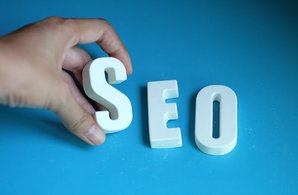How AI Conversion Rate Optimization Is Transforming Your Website Strategy
- Home
- Knowledge Sharing
- How AI Conversion Rate Optimization Is Transforming Your Website Strategy
What is AI conversion rate optimization and why does it matter?
Imagine launching a beautifully designed e-commerce website and investing in traffic-driving strategies, only to see visitors bounce off without converting. Frustrating, right? That’s where AI conversion rate optimization (AI CRO) enters the equation — offering a smarter, data-driven way to turn traffic into tangible results.
Understanding AI CRO
AI Conversion Rate Optimization refers to the use of artificial intelligence techniques — such as machine learning, natural language processing, and real-time automation — to enhance the rate at which visitors complete desired actions on a website (purchases, sign-ups, downloads, etc.).
Unlike traditional CRO, which often relies on manual A/B testing and human-led hypothesis building, AI CRO automates and accelerates this process by:
- Continuously analyzing user behavior
- Identifying patterns invisible to human analysts
- Generating and testing variations autonomously
- Optimizing user journeys in real time
Key Differences Between Traditional CRO and AI-Driven CRO
While both aim to improve user engagement and conversions, the methodology sets them apart:
| Feature | Traditional CRO | AI-Powered CRO |
|---|---|---|
| Testing Speed | Manual, slow iteration | Real-time, automated testing |
| Hypothesis Generation | Human-led | AI-generated from pattern recognition |
| Personalization Level | Limited, broad segmentation | Deep personalization based on user data |
| Adaptability | Reactive | Proactive and self-learning |
This shift from reactive to predictive optimization is a game-changer in a competitive digital landscape.
The Role of Automation and Real-Time Testing
AI CRO platforms harness the power of real-time data streams to automatically tweak and adapt web elements. For example, a tool might detect that a user hesitates on the checkout page, and dynamically adjust the UI — such as simplifying form fields or offering a limited-time discount popup — to reduce friction.
Key automation functions include:
- Real-time element swapping (headlines, CTAs, layouts)
- Smart segmentation based on behavior clusters
- Automatic A/B/n and multivariate testing
- Predictive targeting (based on intent signals)
This automation allows businesses to implement dozens of changes daily without developer intervention, dramatically accelerating optimization cycles.
Why AI CRO Matters in 2025
With customer expectations at an all-time high, optimizing conversions is no longer a one-time project — it’s a continuous, adaptive strategy. AI CRO enables companies to:
- Increase ROI on existing traffic without additional ad spend
- Shorten testing cycles from weeks to hours
- Respond instantly to market changes, behavioral shifts, or UX friction
- Deliver personalized experiences that align with each user’s intent
In short, AI CRO gives marketers and UX teams a live feedback loop that refines itself every second, unlike traditional systems that require long delays for data collection, manual interpretation, and staged rollout.
Real-World Impact and Case Applications
Consider this scenario: an e-commerce store notices cart abandonment spikes. With traditional tools, a team might launch a survey, wait for responses, then A/B test a few changes. That process could take weeks.
But with an AI CRO tool, the system could:
- Immediately detect the friction point (e.g., slow-loading payment gateway)
- Test alternate layouts or loading methods in real-time
- Offer contextual solutions like live chat or exit popups
- Analyze results instantly and apply the winning variation automatically
This is why top-tier platforms like Intellimize, Mutiny, and Optimizely AI are being rapidly adopted across industries.
Where AI CRO Fits in a Broader SEO + UX Strategy
AI CRO doesn't exist in a vacuum — it complements SEO and UX by ensuring that traffic driven to a site doesn't go to waste. For example, Seologist’s eCommerce SEO services drive qualified traffic, and AI CRO ensures that traffic converts more effectively by optimizing each interaction.
What’s the takeaway?
AI CRO is not just a fancy upgrade to traditional optimization — it’s a fundamental rethinking of how businesses understand and serve their visitors. It’s agile, intelligent, and increasingly essential for companies competing in fast-moving digital markets.
Up next: How does AI improve user experience and conversions simultaneously?
How does AI improve user experience and conversions simultaneously?
It’s no longer enough to just attract visitors to your website — the challenge now lies in keeping them engaged, guiding them effectively, and ultimately persuading them to convert. Artificial intelligence has become a silent partner in this process, streamlining user experience (UX) and conversion rate optimization (CRO) at the same time.
Predictive UX: Anticipating User Needs
Traditional UX strategies focus on reacting to user behavior. In contrast, AI introduces predictive UX, which anticipates needs based on behavioral and contextual data. This proactive approach means:
- Content is dynamically rearranged based on visitor intent
- Navigation elements adjust based on user history
- Page load elements are prioritized for engagement
Let’s say a returning visitor previously viewed men's jackets. AI systems can prioritize those categories, populate relevant offers, and even modify on-page copy to reflect cold-weather motivations.
The power of machine learning lies in its ability to interpret historical patterns — page interactions, session durations, bounce rates — to predict and cater to future actions. This not only boosts engagement but creates a seamless user journey.
Personalization and Intent Detection
AI enables deep personalization, moving beyond static demographic segmentation. Instead of targeting users based on age or location alone, AI systems detect real-time intent signals, such as:
- Scroll depth
- Hover behavior over CTA buttons
- Time spent on high-value pages
This micro-level behavioral analysis allows AI tools to present personalized content in real time, whether it’s product recommendations, layout shifts, or promotional overlays.
For example:
- A user showing high scroll activity on a long-form product page might be served a brief summary popup.
- A user lingering on pricing pages may receive an incentive offer or a chatbot prompt with FAQs.
In the study "AI-Driven Personalization and Digital Experience Management" by Adobe, companies that implemented intent-aware personalization experienced a 2.5x increase in conversion rates and 38% higher engagement duration compared to static experiences.
Automating A/B Testing for Speed and Scale
One of the most tedious parts of CRO has always been A/B testing. You create variants, wait for traffic, analyze results, and manually implement the winner. AI revolutionizes this process by:
- Instantly generating multiple page variants using past performance data
- Automatically directing traffic to higher-performing variants in real-time
- Continuously evolving test sets as user behavior shifts
AI-driven A/B testing platforms use multi-armed bandit algorithms — a form of reinforcement learning — to prioritize winning combinations while still testing others.
Tools like Intellimize and Convert.com reduce A/B testing cycles from weeks to days, or even minutes in high-traffic environments. The result? Real-time optimization at scale with minimal human oversight.
Harmonizing UX and CRO Objectives
Traditionally, UX and CRO teams had conflicting goals: UX teams prioritized simplicity and clarity, while CRO teams focused on experimentation and conversions. AI bridges this gap by identifying design choices that simultaneously enhance experience and conversion potential.
Let’s break it down:
- AI detects friction points (like abandoned forms) and tests less intrusive design changes
- UX-friendly changes (e.g., whitespace, button contrast) are A/B tested for conversion effects
- AI learns over time which designs offer the best balance of aesthetics and results
Instead of sacrificing beauty for utility — or vice versa — AI enables both to evolve together.
Expert Insight
According to Siobhan Solberg, founder of Raze, a privacy-centric CRO consultancy:
"AI is not just about automation — it’s about elevation. It allows UX to adapt at the individual level while still optimizing for business goals. That’s a balance we couldn’t achieve manually."
Real-World Example: B2B SaaS
A B2B SaaS company integrated AI-based CRO into their user onboarding process. By analyzing behavior during the signup journey, AI discovered that a specific tooltip caused confusion and drop-offs. The system automatically removed the tooltip and increased sign-up completion by 18% — without human intervention.
This illustrates how AI can fine-tune micro-interactions that human designers often overlook.
AI-driven CRO isn't a compromise between user experience and business objectives — it’s a unification. By predicting needs, personalizing content, and optimizing continuously, AI elevates both UX and conversions simultaneously, creating a cycle of intelligent growth that adapts to every visitor.
Next, we'll dive deeper into the tools that make this possible: What are the top AI CRO tools marketers use in 2025?
What are the top AI CRO tools marketers use in 2025?
Choosing the right AI-powered conversion rate optimization (CRO) tool in 2025 is less about checking boxes and more about aligning capabilities with strategic goals. The market is crowded — but several platforms stand out for their performance, automation, and deep personalization features.
Here’s a breakdown of the most widely used and respected tools in the space today, including a pros and cons comparison based on real-world use cases and user reviews.
Top AI CRO Tools in 2025
1. Convert.com
Best for : Privacy-focused A/B testing with enterprise-level control
Pros :
- No-code visual editor
- Strong support for GDPR and HIPAA compliance
- Unlimited goals and variations
- Works well with server-side testing
Cons :
- Learning curve for advanced features
- Not as strong in predictive personalization
Convert.com is highly rated in forums like GrowthHackers and CXL for its robust security and advanced A/B testing capabilities.
2. Intellimize
Best for : Fully autonomous web optimization
Pros :
- Real-time page adaptation
- Machine learning auto-optimization
- High-level traffic segmentation
Cons :
- Premium pricing
- Limited flexibility in visual design editing
According to G2 user reviews, Intellimize reduces optimization workload by up to 80%, making it a favorite for lean teams.
3. Mutiny
Best for : B2B personalization at scale
Pros :
- Easy integration with CRMs like HubSpot and Salesforce
- Dynamic headline and CTA testing
- Fast deployment with prebuilt playbooks
Cons :
- Primarily B2B-focused, less value for DTC
- Limited design customization
Mutiny has become a go-to for B2B SaaS marketers looking to personalize content by firmographics and funnel stage.
4. Optimizely AI (formerly Experiment)
Best for : Enterprise testing at scale
Pros :
- Powerful multivariate testing
- Advanced behavioral analytics
- Deep integration with CMS, DAM, and analytics stacks
Cons :
- Complex setup
- Requires technical resources
Optimizely AI leads in global enterprise adoption, especially in industries like fintech and e-commerce.
5. Adobe Target
Best for : Companies already using Adobe Experience Cloud
Pros :
- Seamless integration with Adobe Analytics and Adobe Sensei AI
- Rich personalization and audience segmentation
- Scalable across mobile, web, and app
Cons :
- Steep pricing and onboarding cost
- Heavily dependent on the Adobe ecosystem
Adobe Target is praised for its versatility and AI-driven targeting, but works best for large enterprises already committed to the Adobe stack.
| Tool | Best Use Case | Key AI Features | Pricing Tier | Limitations |
|---|---|---|---|---|
| Convert.com | Privacy-first testing | Server-side A/B, unlimited goals | Mid/High | No predictive UX |
| Intellimize | Autonomous testing | Real-time auto-optimization | Premium | Less design control |
| Mutiny | B2B personalization | CRM-linked dynamic content | Premium | Limited visual design |
| Optimizely AI | Enterprise optimization | Multivariate + behavioral AI | Enterprise | Technical onboarding |
| Adobe Target | Adobe suite users | Sensei AI, multi-channel testing | Enterprise | High cost, Adobe ecosystem-bound |
Forum and Community Insights
Across marketing forums such as Reddit's r/digital_marketing and GrowthHackers, users consistently highlight the following:
- Intellimize is favored for set-it-and-forget-it CRO workflows
- Mutiny shines in campaigns requiring B2B segmentation and account-based marketing
- Convert.com gets praise for data control and ease of compliance audits
A senior contributor on Indie Hackers noted:
"Mutiny saved us from building a personalization engine from scratch. For startups, it’s like hiring a CRO team overnight."
Tool Selection Advice
When selecting a tool in 2025, consider these criteria:
- Traffic volume — Some tools require high volumes to function effectively
- Team size and technical skill — Platforms like Optimizely and Adobe need dev support
- Budget and compliance — Convert.com is ideal for companies under tight regulation
- Business model — B2B vs. B2C makes a difference in tool effectiveness
Choosing the right platform isn’t just about feature lists. It’s about how well the tool fits your optimization maturity and internal workflows.
Next, we’ll explore how these tools use AI to analyze user behavior: How does AI analyze behavioral data to improve CRO decisions?
How does AI analyze behavioral data to improve CRO decisions?
Every click, scroll, and hover tells a story — but the human brain can’t always piece that story together at scale. That’s where AI-powered behavioral analysis becomes indispensable. It decodes patterns across millions of interactions and translates them into actionable insights that drive real conversion improvements.
What Is Behavioral Data in CRO?
Behavioral data refers to the digital footprints left by users during their journey across a website or app. Key metrics include:
- Heatmaps (where users click/tap)
- Scroll depth (how far users scroll down a page)
- Time on page (duration of user attention)
- Exit intent (signals that users are about to leave)
In traditional CRO, these metrics are interpreted manually or with basic analytics tools. But AI takes this data and automatically detects correlations, anomalies, and trends, enabling rapid testing and adaptation.
How AI Processes Behavioral Signals
AI models use supervised and unsupervised learning techniques to analyze behavior:
- Clustering groups similar user behaviors to uncover segments (e.g., hesitant vs. decisive shoppers)
- Classification predicts outcomes like bounce or conversion likelihood based on live session behavior
- Anomaly detection identifies unusual behaviors (e.g., rage clicks or sudden abandonment)
These AI capabilities turn raw behavioral data into predictive insights. For instance:
- Users hovering over a CTA without clicking may trigger a layout change or tooltip
- Visitors scrolling quickly but not converting might be shown a sticky navigation bar or content shortcut
Real-Time Adjustments Based on Behavioral Feedback
Advanced AI tools don’t just analyze after the fact — they act during the session. For example:
- Exit-intent popups are served when AI detects rapid upward cursor movement
- Live chatbots engage when user behavior suggests confusion (e.g., multiple clicks on different tabs)
- Product recommendations adapt in real-time based on browsing depth and click patterns
These micro-interventions, while subtle, add up to significant improvements in user engagement and conversion.
AI and Heatmaps: Going Beyond the Visuals
Heatmaps are a common visual tool in CRO, but AI takes their utility further. Instead of just showing hot and cold zones, AI:
- Quantifies interaction density changes over time
- Cross-references click data with conversion actions
- Predicts drop-off points before they happen
In a study by Contentsquare titled "Digital Experience Benchmark 2024," companies using AI-enhanced heatmaps improved form completion rates by 23% compared to those using standard tools.
| Feature | Description | Impact on CRO |
|---|---|---|
| Scroll Depth Analysis | Tracks user engagement with content | Identifies content drop-off |
| Exit-Intent Triggers | Detects leave signals in real time | Reduces bounce rate |
| Session Replay Clustering | AI groups similar session behaviors | Improves segmentation |
| Rage Click Detection | Identifies UX frustrations | Pinpoints usability issues |
| Predictive Pathing | Forecasts user next steps | Optimizes funnel flow |
Forum and Community Findings
On CRO Slack channels and forums like CXL Institute, marketers report using AI-driven behavior tools to:
- Identify conversion-blocking friction in long checkout forms
- Adjust pricing layout when users hesitated on the pricing tier pages
- Remove elements that drew attention but didn’t contribute to goals (e.g., hero carousels)
One user on GrowthHackers noted:
"Our AI flagged scroll fatigue on our service page. We split the content, used sticky navigation, and saw a 14% increase in demo signups in just a week."
A Real Example: Heatmap + Predictive UX in E-commerce
A fashion brand using Convert.com paired AI-generated heatmaps with scroll-depth analytics. They found that mobile users weren’t reaching the size chart section. The system recommended moving it higher. After implementation, cart conversions increased by 19% on mobile.
Why It Matters
Traditional analytics tells you what happened. AI tells you why it happened — and what you should do next. It turns passive observation into strategic action. This leap from observation to prediction is what makes AI a cornerstone of modern CRO.
Up next : Are there risks in using AI for CRO? Let’s explore the potential pitfalls.
Are there risks in using AI for CRO?
AI may be reshaping conversion rate optimization (CRO) with speed and precision, but it's not without its pitfalls. While the advantages of automation, prediction, and personalization are compelling, marketers must remain vigilant about the limitations and risks that come with deploying AI in CRO strategies.
Risk #1: Overfitting to the Wrong Audience Segment
One of the most common issues with AI in CRO is overfitting, where the algorithm optimizes too aggressively for short-term behavior patterns.
For example:
- If AI observes that most conversions come from mobile traffic on weekdays, it may over-prioritize mobile layout optimization — potentially at the cost of the desktop UX.
- A tool may narrow in on one high-performing demographic, reducing visibility for emerging or underserved segments.
This tunnel vision can lead to missed growth opportunities and user experience inconsistencies across platforms or devices.
Risk #2: Algorithmic Bias and Skewed Optimization
AI systems are only as unbiased as the data they’re trained on. When historical data reflects skewed audience behavior or incomplete inputs, AI can perpetuate or even amplify biases.
Potential bias impacts include:
- Prioritizing certain gender or age groups disproportionately
- Penalizing non-English speaking users due to text model limitations
- Favoring customers with specific buying patterns and excluding new personas
In the study "Algorithmic Bias in Marketing AI" by MIT Sloan Management Review, researchers found that AI personalization tools could amplify existing disparities if not carefully monitored.
Risk #3: Hallucinated Patterns and Misinterpreted Signals
AI’s ability to find correlations can backfire when it identifies spurious patterns that don’t actually drive conversions.
For instance:
- AI might correlate long session time with higher conversions, but not account for sessions where users are stuck or confused
- It might assume a high click rate on a graphic equates to interest, when users are actually trying to dismiss an intrusive overlay
These hallucinated insights can lead teams to prioritize irrelevant changes, wasting resources and introducing confusion.
Risk #4: Lack of Creative and Emotional Nuance
AI is highly proficient in optimizing based on behavior — but it lacks emotional intuition and brand context. It can’t:
- Understand cultural tone shifts in messaging
- Create content that evokes deep emotional resonance
- Strategically break design conventions for impact
This makes AI excellent for micro-optimizations, but dangerous if relied upon exclusively for creative direction.
As Talia Wolf, a renowned conversion strategist, says:
"AI is great at tweaking elements that already work — but it can’t replace the emotional connection that drives truly great marketing."
Risk #5: Loss of Human Oversight and Strategic Vision
When teams rely too heavily on automation, there's a risk of losing the bigger picture. AI might suggest local optimizations (e.g., changing a CTA color), but miss strategic misalignments like product-market fit or messaging tone.
It’s crucial that AI serves as a support system, not a replacement for:
- Strategic planning
- Brand alignment
- Ethical judgment
AI can make websites more efficient, but only humans can make them meaningful.
Risk Mitigation: How to Use AI Responsibly in CRO
To safeguard against these risks, organizations must:
- Regularly audit AI outputs for skewed patterns
- Set thresholds and guardrails in AI testing platforms
- Combine AI with qualitative research (interviews, surveys, usability testing)
- Maintain human review for major design and copy changes
- Continuously test against a control to ensure changes align with long-term goals
AI is a powerful ally in CRO — but like any tool, its effectiveness depends on how it's used, supervised, and balanced with human insight. Blind reliance on automation can result in short-term wins but long-term erosion of trust, relevance, and creativity.
In the next section, we’ll tackle a practical concern: How much should you invest in AI-powered CRO tools?
How much should you invest in AI-powered CRO tools?
The question isn’t just whether you should adopt AI-powered conversion rate optimization (CRO) tools — it’s how much you should invest based on your growth stage, resources, and expected ROI. With platforms offering a wide range of capabilities and pricing structures, understanding the true cost and value is critical.
Understanding Pricing Tiers
AI CRO tools typically fall into three pricing categories:
-
Free or Freemium Tools
- Limited testing or traffic volume
- Basic behavioral analytics (e.g., heatmaps, scroll tracking)
- Often used by early-stage startups or as supplements to manual CRO
-
SMB-Level Subscriptions ($50–$500/month)
- Access to core AI features (e.g., automated A/B testing)
- Moderate traffic capacity (up to 100K sessions/month)
- Includes tools like Convert.com starter plans or early-stage Mutiny options
-
Enterprise Solutions ($1,000/month to $10,000+/month)
- Full-stack optimization suites with machine learning and API integration
- Unlimited multivariate testing, predictive segmentation, and custom personalization
- Examples: Adobe Target, Optimizely AI, Intellimize
| Feature | Free Tools | SMB Tools | Enterprise Tools |
|---|---|---|---|
| AI Personalization | Limited or none | Basic rule-based | Real-time, predictive |
| Testing Capacity | Low (5–10K/month) | Mid (up to 100K) | High (1M+ sessions/month) |
| Data Integration | None or basic | Google Analytics, CRM | Full API + BI systems |
| Support and Training | Community only | Email/Chat | Dedicated support team |
| Behavioral Data Analysis | Basic click maps | Scroll depth, heatmaps | Predictive analytics |
| Ideal For | Startups, testing | SMBs, lean teams | Enterprises, agencies |
How to Budget for AI CRO
Here are five key factors that influence your investment decision:
-
Monthly Website Traffic
- AI optimization benefits compound with higher traffic. Sites with <10K visitors/month may see minimal return from high-end platforms.
-
Team Resources and Skills
- If you lack a technical CRO team, opt for tools with strong automation and managed support (e.g., Intellimize or Mutiny).
-
Sales Funnel Complexity
- Multi-touch B2B funnels with long sales cycles benefit more from AI than simple e-commerce setups.
-
Regulatory or Compliance Requirements
- Tools like Convert.com may justify higher cost due to compliance features (HIPAA, GDPR).
-
Expected ROI
- For companies already running successful paid traffic campaigns, even a 10–15% increase in conversion rate can quickly offset AI tool costs.
| Feature | Free Plan | Paid Plan ($99–$499) | Enterprise ($1,000+) |
|---|---|---|---|
| A/B Testing Automation | Manual | Yes | Advanced (AI-driven) |
| Real-Time Adaptation | No | Limited | Full AI implementation |
| CRM/Marketing Integration | No | Yes | Yes (deep integration) |
| Multi-language Support | Rare | Common | Custom |
| Custom Audiences | No | Rule-based | Predictive modeling |
Strategic Recommendations for Different Business Sizes
For Startups and Solopreneurs:
- Begin with freemium tools or basic paid plans from Convert.com or Google Optimize alternatives
- Prioritize behavioral analysis and simple A/B testing
For Growing SMBs:
- Invest in mid-tier AI CRO tools that offer automation but are intuitive (e.g., Mutiny or Intellimize base packages)
- Aim to automate repetitive optimization tasks to free up internal resources
For Enterprises:
- Budget $2,500–$10,000/month depending on traffic volume and complexity
- Integrate CRO tools into your tech stack (CRM, CDP, BI tools)
- Build internal protocols to validate AI-driven decisions
Insights From the Field
According to a Forrester study on personalization ROI (link to: https://www.forrester.com ), enterprise companies using AI CRO tools reported:
- 15–30% lift in conversion rates
- 20% faster time-to-value for campaigns
- 3–5x ROI within the first year
And in feedback shared on GrowthHackers:
"We started with a $400/month plan, but the returns were so immediate we scaled to enterprise in 3 months. The AI decisions saved us from months of testing."
There’s no one-size-fits-all budget for AI CRO — but there's always a tool for your current stage. The key is to align investment with growth velocity, not just traffic. Start where you are, but be ready to scale once AI begins showing measurable improvements.
Next: let’s look ahead. What are emerging trends in AI conversion rate optimization?
What are emerging trends in AI conversion rate optimization?
The field of AI conversion rate optimization (CRO) is evolving rapidly, and 2025 is set to push the boundaries further than ever before. As AI technology matures, we're witnessing a shift from simple automation to autonomous, multimodal, and context-aware systems that not only optimize but also strategize in real time. Here are the top emerging trends reshaping how CRO is approached.
1. Autonomous CRO Systems
We’ve gone from manual testing to AI-assisted workflows — and now into fully autonomous CRO platforms. These systems:
- Detect friction points without human tagging
- Generate design and copy variants autonomously
- Run multivariate tests without developer intervention
- Deploy winning variants in real time
This new generation of CRO tools functions like self-driving optimizers, capable of adapting interfaces based on live behavioral, environmental, and performance data.
Platforms like Intellimize and Optimizely AI are at the forefront of this trend, allowing CRO teams to scale experimentation exponentially while reducing the human workload.
2. AI + Web3 for UX Ownership
As Web3 infrastructure becomes more integrated into consumer applications, AI CRO tools are starting to interact with decentralized UX environments. Key implications include:
- User-owned personalization profiles: AI systems can access wallet-bound identity data to personalize UX without tracking cookies
- Smart contracts for UX testing: Users can be incentivized via tokens to engage in experiments
This brings ethical personalization to the forefront — personalization without surveillance.
Web3-compatible CRO tools are still early-stage, but communities like https://www.web3ux.org are exploring open-source alternatives to centralized UX optimization engines.
3. Multimodal UX Optimization
Previously, CRO was largely text- and layout-focused. But now, multimodal CRO is entering the picture. These systems:
- Combine visual signals (images, video, gestures) with text and behavioral inputs
- Adapt user interfaces based on tone of voice (in voice UIs), image preference patterns, or even facial sentiment (where compliant)
- Tailor cross-device experiences (smartphones, wearables, kiosks) in sync
For example, Adobe Target’s latest beta program allows image variation testing in conjunction with AI-driven headline optimization — enabling holistic, multimodal personalization.
4. Adaptive Storytelling Based on Cognitive Models
AI CRO is now pulling from cognitive behavioral modeling to shape user journeys. Instead of optimizing a single CTA, tools now adapt the entire story arc:
- Introducing emotion-aware sequencing in copy and layout
- Detecting cognitive load to adjust information density
- Switching persuasive techniques based on behavioral stage (e.g., authority bias for early users, social proof for warm leads)
This shift helps bridge the gap between quantitative optimization and qualitative persuasion.
5. Synthetic Data in A/B Testing
Real-user data is invaluable — but limited. That’s why CRO tools in 2025 are increasingly generating synthetic users for predictive testing. These simulated profiles:
- Emulate real audience behavior using generative AI
- Predict probable responses to UX changes before live deployment
- Reduce the time and risk associated with early-phase A/B testing
By training on actual user patterns, synthetic agents can simulate high-stakes tests like pricing experiments or new checkout flows without risking real revenue.
6. Conversational and Voice-Based CRO
As more users engage with interfaces through voice (e.g., mobile voice search, chatbots), AI CRO is adapting optimization logic to conversational interfaces. Key developments:
- Dynamic rewriting of chatbot scripts based on conversion success
- Adaptive tone matching in voice interfaces
- Optimization of IVR and voice app journeys based on sentiment and drop-off
This trend will grow as voice becomes a primary interface in commerce, especially in sectors like healthcare and fintech.
7. Predictive Micro-Interactions
Finally, the most subtle trend is also one of the most powerful: predictive micro-UX changes based on intent scoring. These involve:
- Adjusting button spacing or color based on cursor behavior
- Pre-loading certain assets based on gaze tracking (where used)
- Optimizing form field order in real time based on interaction friction
Instead of redesigning full pages, AI now tweaks tiny but high-impact elements to drive conversions without disrupting design integrity.
AI CRO in 2025 is not just smarter — it’s more context-aware, user-respecting, and experientially rich. The future of optimization lies in tools that think strategically, adapt autonomously, and honor user control. This evolution will transform CRO from an analytical function into a creative and ethical growth driver.
Up next: time to evaluate all this. Conclusion: Should you implement AI CRO in your 2025 strategy?
Conclusion: Should you implement AI CRO in your 2025 strategy?
If 2024 was the tipping point for AI in marketing, 2025 is the year that solidifies AI-powered conversion rate optimization (CRO) as a core growth capability, not a luxury. The benefits — real-time decision-making, hyper-personalization, automated experimentation — are now proven across sectors. But should your team invest?
Let’s summarize what we’ve covered and offer actionable recommendations.
| Tool | Best For | Strengths | Pricing Tier |
|---|---|---|---|
| Convert.com | Privacy-first testing | Server-side A/B testing, GDPR-compliant | Mid |
| Intellimize | Fully autonomous optimization | Real-time adaptation, no-code deployment | Premium/Enterprise |
| Mutiny | B2B personalization | CRM integration, playbooks | Premium |
| Optimizely AI | Enterprise-scale testing | Deep analytics, multivariate testing | Enterprise |
| Adobe Target | Integrated Adobe stack users | Multichannel, powered by Adobe Sensei AI | Enterprise |
Strategy Recommendations
-
Evaluate Readiness Before Investing
- Audit your current traffic volume, testing processes, and UX maturity
- AI CRO brings ROI only if there’s enough data for training and testing
-
Begin With Mid-Tier Tools (If You’re SMB or Scaling)
- Tools like Mutiny and Convert.com offer excellent entry points for organizations without large CRO teams
- Choose platforms that align with your compliance and design freedom needs
-
Integrate CRO With SEO and Content
- AI CRO is most effective when aligned with traffic strategies like eCommerce SEO
- Align landing page design, messaging, and UX optimizations under a unified analytics framework
-
Keep Human Oversight in the Loop
- Let AI handle micro-optimizations (CTAs, layout shifts), but let humans lead creative, brand, and ethical decisions
- Establish regular review cycles for AI-generated tests
-
Budget for Iteration
- Don't expect magic in 30 days. AI needs cycles to learn. Budget for 3–6 months of iterative optimization to evaluate ROI properly.
Expert Wrap-Up
According to Peep Laja, founder of Wynter and CXL:
"AI is brilliant at finding what works — but only if you’ve got clarity on what you’re trying to say. Don’t expect it to create strategy for you."
AI CRO isn’t a silver bullet — but it is a sharp blade when used with intent.
Bibliography / Authoritative References
- Forrester: https://www.forrester.com/
- MIT Sloan Management Review: https://sloanreview.mit.edu/
- Adobe Personalization Insights: https://www.adobe.com/
- GrowthHackers CRO Threads: https://growthhackers.com/
- CXL Institute: https://cxl.com/
- Conversion Crimes (Siobhan Solberg): https://conversioncrimes.com/
- GetUplift (Talia Wolf): https://getuplift.co/
Final Verdict
If you're running a serious digital operation in 2025, AI CRO should be part of your stack.
Whether you're optimizing for ecommerce, SaaS onboarding, or lead-gen funnels, AI will help you:
- Test faster
- Learn smarter
- Convert more
FAQs about AI Conversion Rate Optimization
What should be in place before adopting AI CRO?
Have clean analytics, a clear conversion map (primary/secondary goals), consent management, and performance baselines (by device/geo/channel). Set guardrails (min sample sizes, max daily changes) and define rollback rules before the first experiment.
Which pages are the best pilots for AI CRO?
Start where intent is highest and traffic is steady: pricing, checkout, key lead-gen forms, and top organic landing pages. Avoid pages with heavy seasonality or ongoing redesigns, so lift can be attributed cleanly.
Can AI CRO work on low-traffic sites?
Yes use aggregated goals (micro-conversions like add-to-cart, form start), longer test windows, and hierarchical models that learn across similar pages. Consider server-side experiments on high-volume components (e.g., search results, recommendations) to accelerate learning.
How do we measure true lift from AI experiments?
Use holdout groups, sequential testing, and CUPED/variance reduction where supported. Report both conversion-rate and absolute revenue/lead impact, and segment by device and new vs. returning users to avoid Simpson’s paradox.
How do we keep AI-led changes on brand and compliant?
Create a governance workflow: design/brand guidelines, pre-approved component libraries, and legal/PII rules. Require human approval for copytone or pricing changes, and restrict the AI to safe parameters (e.g., CTA wording ranges, color tokens).
Will AI CRO hurt Core Web Vitals or accessibility?
It shouldn’t if you enforce performance budgets (no blocking scripts, async loading) and test variants with automated a11y checks (contrast, focus states, ARIA). Include “no-animation” fallbacks and monitor CLS/LCP/INP as hard gates for launching winners.
What’s the difference between client-side and server-side AI testing?
Client-side is faster to deploy and great for UI copy/layout tweaks; server-side improves data fidelity, speed, and privacy, and can test logic, pricing, or recommendations. Many teams run a hybrid model: server-side for core logic, client-side for presentation.
How do we prevent model drift and stale learnings?
Schedule periodic re-evaluation (e.g., monthly) with fresh priors, freeze winners for validation, and re-train after major traffic or product changes. Keep a changelog of promotions, outages, and releases to explain anomalies.
How should qualitative research fit with AI CRO?
Use AI to surface “where” and “who,” then pair with interviews, moderated tests, and session replays to learn “why.” Feed qualitative insights back into variant generation (messaging, objections, social proof) for higher-quality hypotheses.
What if results plateau after early wins?
Increase exploration: test new value props, reframe offers, trial different information architecture, or shift to upstream pages (ad landers, category). Rotate constraints (e.g., mobile-first, accessibility-first), and pursue bigger bets like form simplification or pricing packaging tests.






